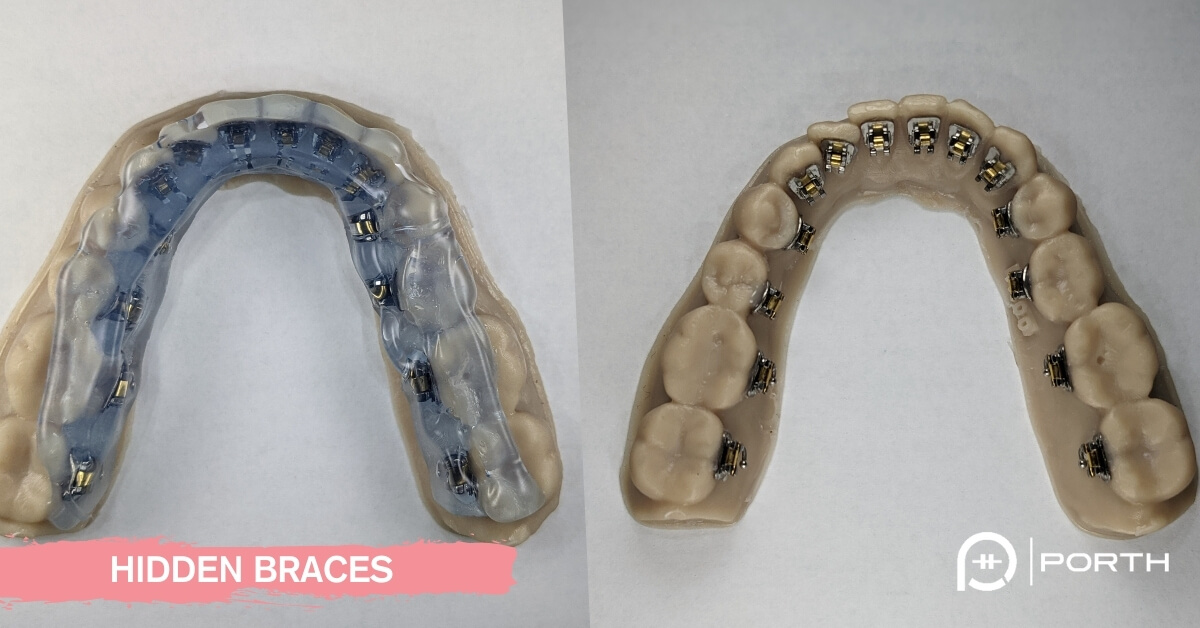What are hidden braces?
Hidden braces (lingual braces) are installed on the back of your teeth. These braces move your teeth without anyone noticing that you are in orthodontic treatment.
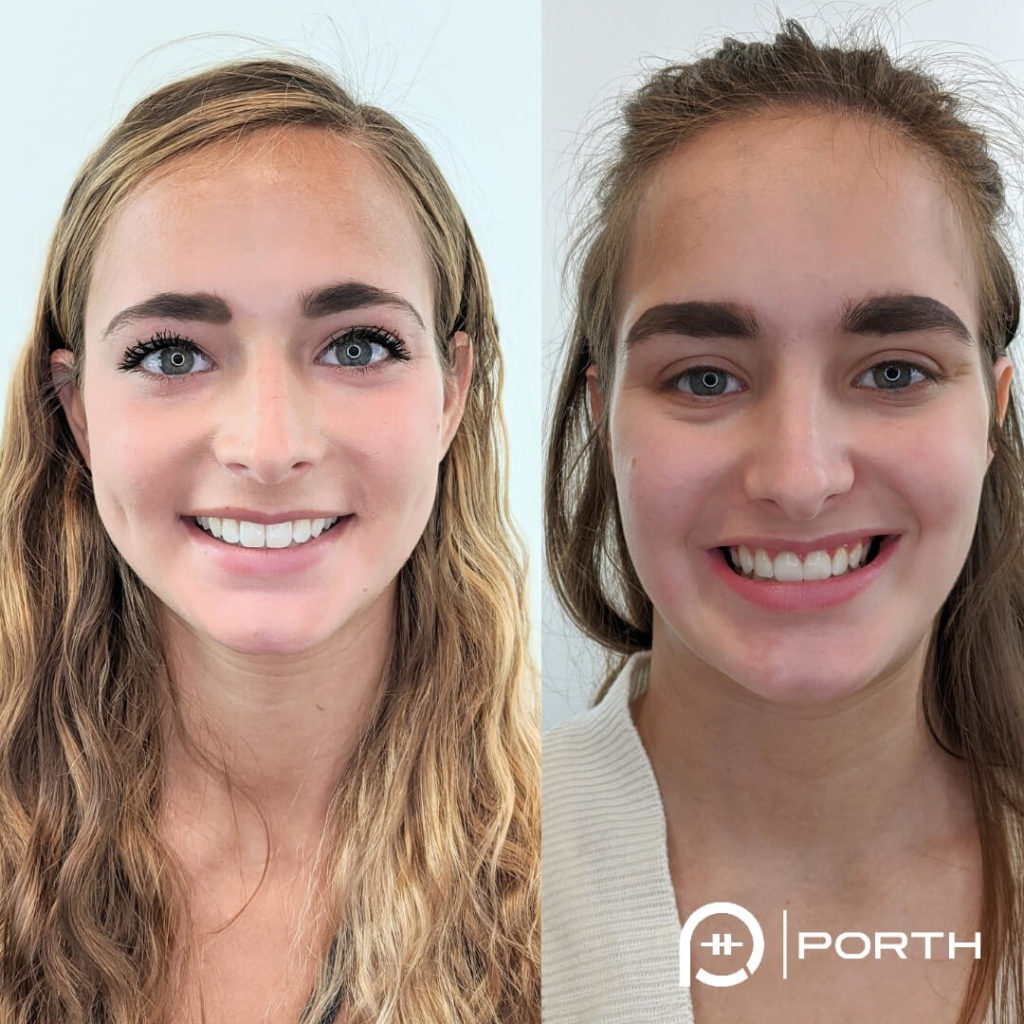
Unlike traditional braces that attach to the front teeth, hidden braces are placed on the tongue-side or back side of your teeth, making them virtually invisible. Orthodontists use state-of-the-art technology, including robotics and digital scans, to custom-fit these braces for each individual’s treatment plan, ensuring a perfect smile. Each type of orthodontic braces works by applying continuous pressure through arch wires to move teeth into the desired position. The choice between types of braces will depend on several factors, including the severity of dental issues, treatment time, and personal preference. Orthodontic treatment may also involve the use of retainers and regular flossing to maintain the results after braces are removed.
How does braces work?
Lingual braces or traditional braces move the teeth by an arch wire that connects all the teeth. Lingual braces often use state-of-the-art technology of robotic fabricated wires (Suresmile, Incognito, InBrace or Brius).
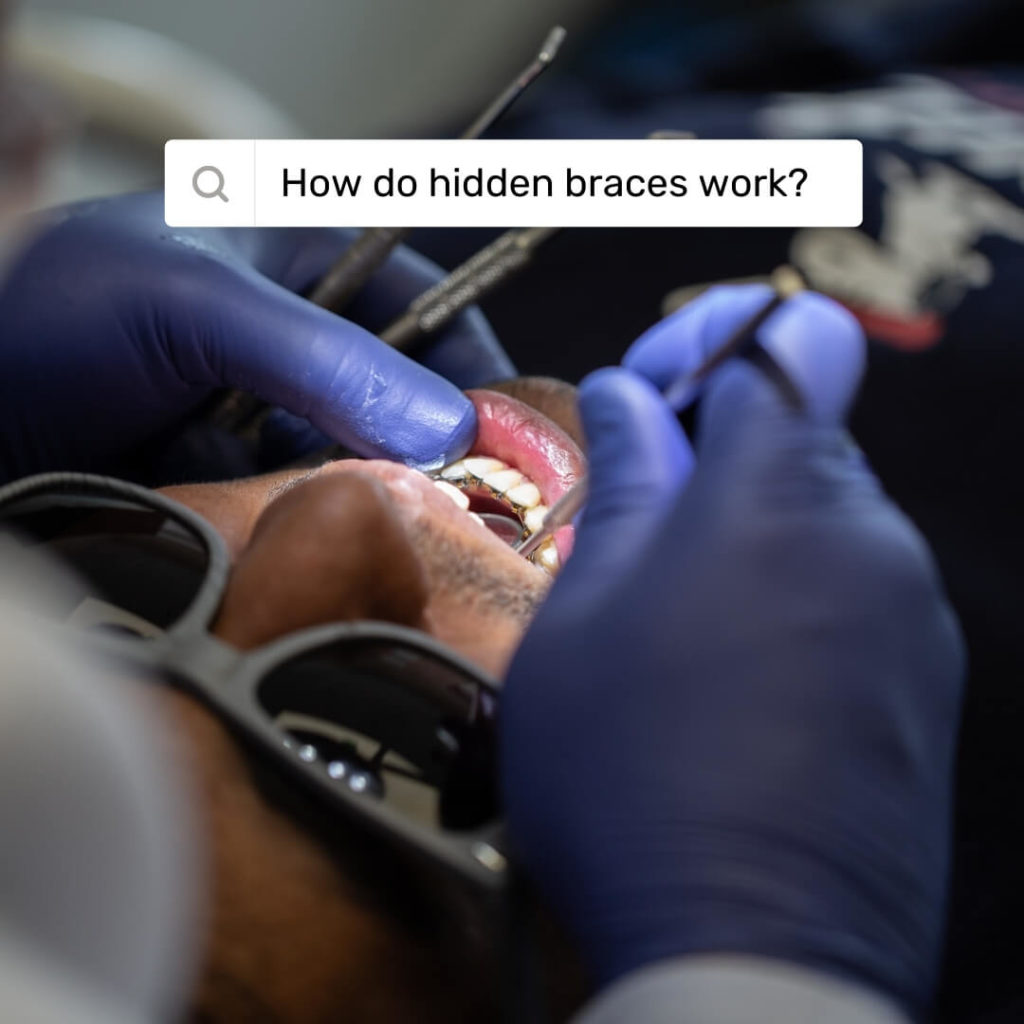
Lingual braces are custom-fitted to the back side or tongue-side of your teeth, making them completely hidden from view. This orthodontic approach (hidden braces) involves using state-of-the-art technology, including digital scans and robotics, to create a custom fit that aligns specifically with your orthodontic treatment plan. The braces work by applying gentle, yet continuous pressure on the teeth through arch wires, gradually shifting them into the desired position for a perfect smile. Despite their invisibility, lingual braces are highly effective in correcting malocclusions and improving oral hygiene without impacting the accessibility to clean your teeth. Orthodontists typically recommend lingual braces as part of a comprehensive treatment plan, which may also include the use of retainers post-treatment to maintain the alignment. Additionally, lingual braces are an excellent option for individuals concerned about aesthetics, such as those playing wind instruments or professionals seeking a discreet orthodontic solution. During a free consultation, an orthodontist can assess whether you are a good candidate for lingual braces by taking impressions of your teeth and discussing the expected treatment time and care requirements to ensure a successful outcome and a beautiful smile.
What are incognito hidden braces?
These braces are installed on the back side of the teeth. There are multiple bracket systems that can be installed on the tongue-side of your teeth and Incognito is one brand.
Incognito braces, also known as Incognito Hidden Braces, are a type of orthodontic treatment designed to straighten teeth discreetly. They are part of the lingual braces family, meaning they are attached to the back side of the teeth (tongue-side), making them invisible when you smile or talk. These braces are custom-made for each patient using state-of-the-art technology to ensure a perfect, comfortable fit. The customization involves taking digital impressions of your teeth, from which the braces are tailored to the unique shape of your teeth and orthodontic needs. Incognito braces are effective for treating a range of orthodontic issues, including malocclusions, ensuring improved oral hygiene and a beautiful smile without the aesthetic concern associated with traditional metal braces.
Alternative choices to Incognito braces include:
1. Traditional Braces: These are the conventional metal braces that are attached to the front of the teeth. They are the most visible type but are often the most cost-effective and are effective for a wide range of orthodontic corrections.
2. Ceramic Braces: Similar to traditional braces in function and design, but the brackets are made from a clear or tooth-colored ceramic material, making them less noticeable.
3. Invisalign (Clear Aligners): Invisalign uses a series of clear, removable aligners to straighten teeth. They are virtually invisible when worn and can be taken out for eating, drinking, and cleaning. This treatment is popular among adults and teenagers who seek a less noticeable form of orthodontic treatment.
4. Self-ligating Braces: These braces use clips or doors to hold the wire in place instead of rubber bands, reducing the amount of pressure exerted on the teeth and potentially shortening treatment time. They can come in metal or ceramic forms.
5. Inbrace: Similar to Incognito, Inbrace is a newer type of lingual braces but with a unique low-profile design that makes them more comfortable and easier to clean than traditional lingual braces.
Each of these alternatives has its own set of advantages, costs, and suitability for different orthodontic needs. Your orthodontist can provide a detailed comparison based on your specific conditions, lifestyle, and treatment goals during a free consultation, helping you make an informed decision on which orthodontic treatment is best for you.
How long should I wear lingual braces?
Most orthodontic treatment with lingual braces will get you to a perfect smile in one to two years.
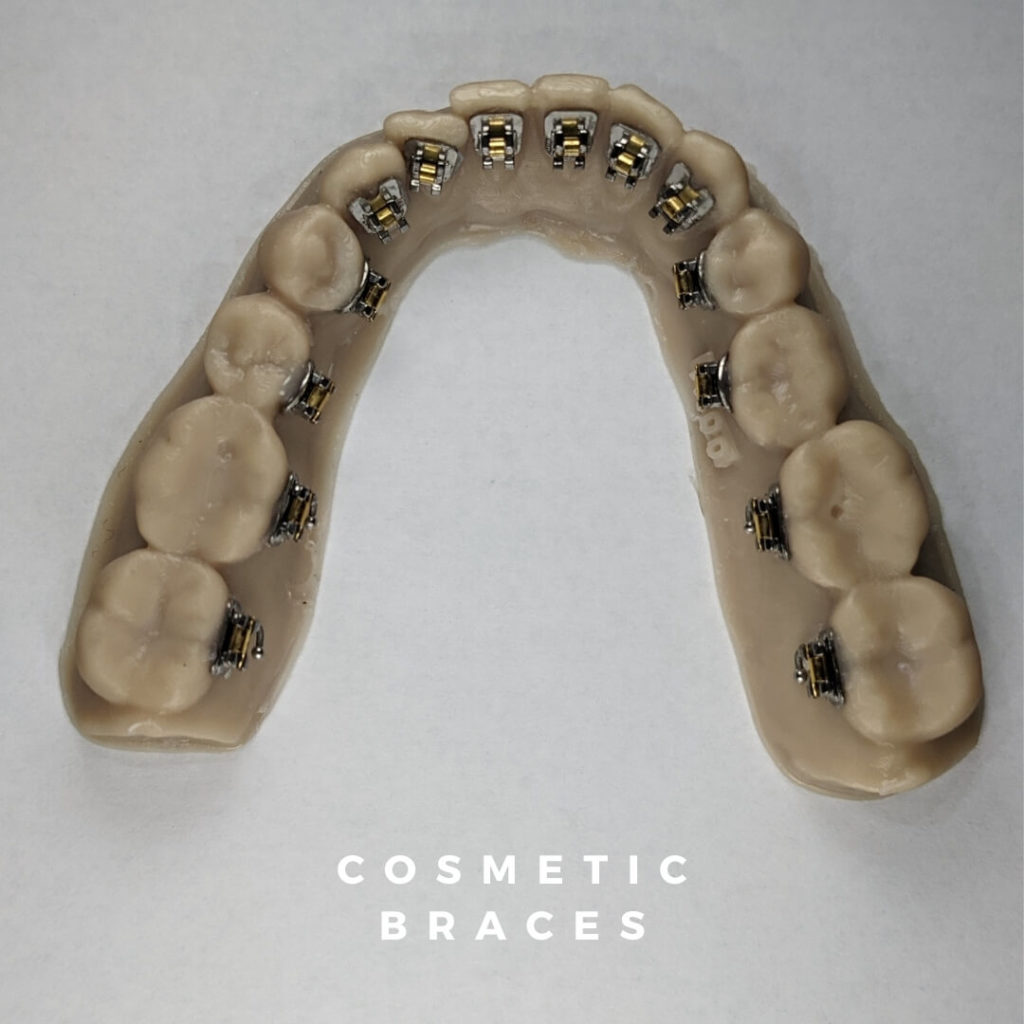
What is the cost of lingual braces?
Lingual braces are more expensive compare to conventional braces. Click to learn more about the cost orthodontic treatment: Braces cost
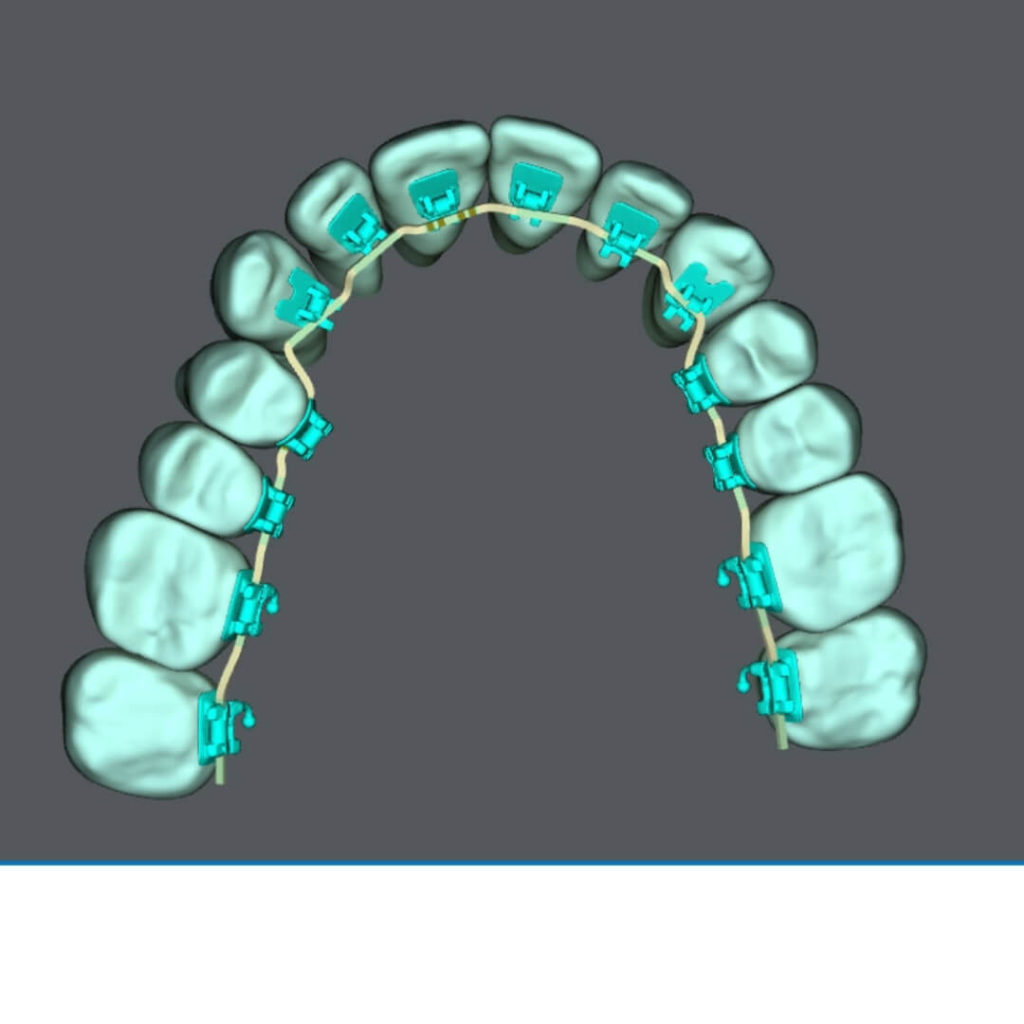
FAQ on hidden braces
Incognito bracse are a type of lingual braces. Braces on the back of your teeth are more expensive than traditional braces or Invisalign clear aligners.
The cost of orthodontic treatment with lingual invisible braces varies from $7000 to $15000.
Hidden braces come in various shape and style. Incognito hidden braces are one of them.
Lingual braces like other types of braces (Invisalign or traditional braces) cause discomfort. Most orthodontist that offer lingual orthodontics provide special home care kit that help managing the pain associated with lingual braces.
It takes about 90 minutes to place the braces and custom fit arch wires and start the journey to a beautiful smile.
Food can get stuck around the arch wire and lingual braces. Maintaining a good oral hygiene by regularly using floss and a tooth brush.
No hidden braces (incognito, SureSmile, inbraces or Brius) like conventional braces fix malocclusion in about one to two years. It is important to wear retainer for the rest of your life to keep your teeth straight.
The main advantage of invisible braces (lingual braces) is to avoid headaches of dealing with aligner daily life. Hidden braces give you both advantage of a cosmetic treatment option with minimum compliance issue.
Adults and some teens don’t like to show their braces during their orthodontic treatment time.
Cost of braces include the cost of orthodontic treatment.
A free consultation with an orthodontist would give you lots of information including an orthodontic treatment plan. They will tell you if you are a good candidate.
Most orthodontists take a digital scan of your teeth show you how braces works. Orthodontic braces whether an incognito system, traditional metal braces or Invisalign.
